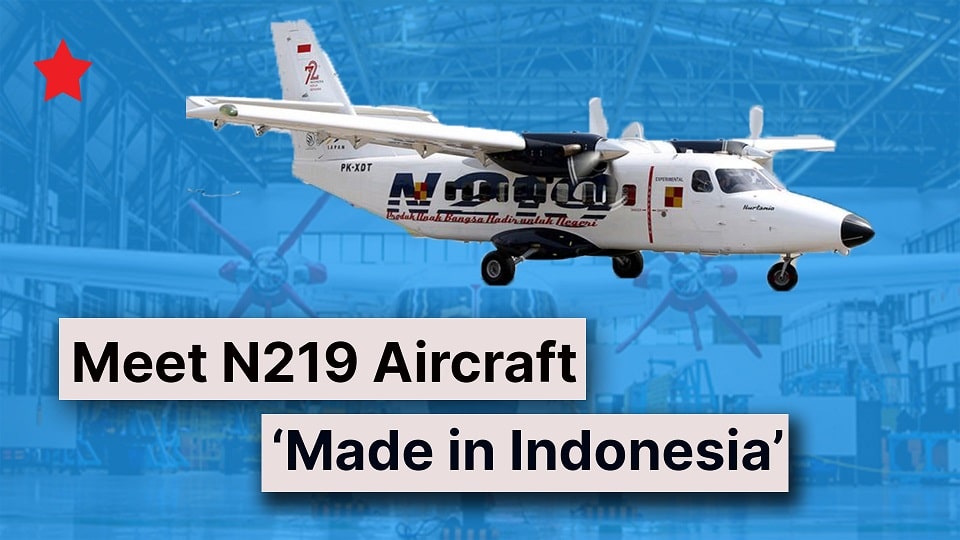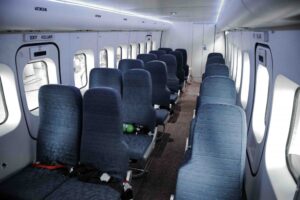Aerospace
N219 Nurtanio is an Indonesian-built aircraft : Specification, Range & Seats

Welcome back to Jetline Marvel. Did you know that Western nations are more dominant in the aviation industry. because they put a greater priority on research and development, and are skilled at producing high-quality aircraft, based on their experiences. However, despite having a lesser budget project, one country is currently progressively spreading out its aviation technology, and they are doing their best to create their own aircraft. Yes, we’re talking about Indonesian-made N219 planes. It all began in 2006, when they decided to build and manufacture this versatile aircraft.
PT Dirgantara is a corporation located in Indonesia. PTDI has effectively developed and grown its competence as an aerospace industry. since its establishment in 1976 as a state-owned enterprise in Bandung, Indonesia.
Let’s speak about the N219 aircraft, which is a new generation multi-purpose aircraft with the largest cabin cross section in its class, a proven and efficient engine, modern avionics system, fixed tricycle landing gear, and a wide cargo door to make changing aircraft configuration easier. As a result, N219 Nurtanio is designed to give operators with technical and economic benefits.
This aircraft may be employed for a variety of missions, including passenger and troop transport, freight and medical supplies, surveillance, and patrolling.
The aircraft is 16.49 metres in length, 19.5 metres in wingspan, and 6.18 metres in height.
The maximum take-off weight of this aircraft is 7,030 kg, while the fuel capacity is 1,600 kg. It has a maximum range of 890 kilometers and a payload of 2,313 kg.
What is the Boeing P-8I in the Indian Navy used for?
It has a takeoff distance of 435 metres and a landing distance of 509 metres. It has a top speed of 390 kilometres per hour and a stall speed of 109 kilometers per hour. It has a ceiling altitude of up to 24000 feet and can operate at a height of 10,000 feet. it has Climbing speed 9.85 meters per second.
JM Exclusive tour onboard the EMBRAER E195-E2 Demonstrator.
Two Pratt & Whitney turboprop engines power this aircraft. can generate up to 630 kW The propeller is a four-bladed Hartzell
PERFORMANCE
|
In 2019, six aircraft were expected to be produced, expanding to 16 at 2020 and 36 per year in a new $90-100 million facility financed by equity participation, private-public partnerships other investor.
First A319neo flight with 100% sustainable aviation fuel
The selling price of N219 aircraft, according to PTDI‘s Production Director, Arie Wibowo, is in the region of US $ 6 million per unit, or roughly Rp 81 billion.
Prior to local certification, PT Dirgantara Indonesia (PTDI) has received orders for 120 of its N219 multi-purpose utility turboprops.

Aerospace
Boeing Transfers Rocket Stage to NASA, Paving Way for Human Moon Mission

Boeing has achieved a significant milestone by providing NASA with the second core stage of the Space Launch System (SLS) rocket.
This crucial component, crafted at NASA’s Michoud Assembly Facility (MAF), is set to propel the Artemis II crew into lunar orbit, marking humanity’s return to deep space after a 50-year hiatus.
The monumental Boeing-built rocket stage, the largest element of the Artemis II mission, will embark on a journey aboard the Pegasus barge, traveling 900 miles to NASA’s Kennedy Space Center.
Comparison of two legendary aircraft B777x vs B747 aircraft:Click here
Upon arrival, it will be meticulously integrated with other essential Artemis II components, including the upper stage, solid rocket boosters, and NASA’s Orion spacecraft within the iconic Vehicle Assembly Building. This intricate integration process is a vital step toward the eagerly anticipated Artemis II launch, slated for 2025.
“Boeing-built products helped land humankind on the moon in 1969, and we’re proud to continue that legacy through the Artemis generation,” remarked Dave Dutcher, vice president and program manager for Boeing’s SLS program. “Together, with NASA and our industry partners and suppliers, we are building the world’s most capable rocket and paving the way to deep space through America’s rocket factory in New Orleans.”
NASA, Lockheed Martin Reveal X-59 Quiet Supersonic Aircraft:Click here
The delivery of Core Stage 2 marks a significant achievement in the evolution of the SLS rocket. Towering over 200 feet and powered by four RS-25 engines, this core stage, coupled with two solid-fueled booster rockets, will generate a staggering 8.8 million pounds of thrust. This immense power is crucial to launching Artemis II and future missions into the vast expanse of space.
The SLS rocket stands unparalleled in its capability to transport both crew and substantial cargo to the moon and beyond in a single launch. Its extraordinary capacity will facilitate the delivery of human-rated spacecraft, habitats, and scientific missions to destinations including the moon and Mars, ushering in a new era of space exploration.
-

 Travel1 week ago
Travel1 week agoAir India to Expand US Operations with Three New Routes After a Decade
-

 Travel2 weeks ago
Travel2 weeks agoWhy We Should Avoid These Stamps in a Passport
-

 Airlines1 month ago
Airlines1 month agoInvestigations Reveal Fake Chinese Titanium in Boeing and Airbus Jets
-

 Tech4 weeks ago
Tech4 weeks agoChina’s CATL Plans 1,800-Mile Electric Plane Launch by 2027
-

 Airport3 days ago
Airport3 days agoTop 10 Largest Airports in the World by Size
-

 Aerospace4 weeks ago
Aerospace4 weeks agoChina’s Fighter Jets Turn Wings into Autonomous Drones
-

 Airlines4 days ago
Airlines4 days agoAir India Rolls Out A350s for Delhi-New York JFK and Newark Routes
-

 Defence3 weeks ago
Defence3 weeks agoBoeing Enhances Chinook with New Engines and Block II Upgrades at $96 Million








